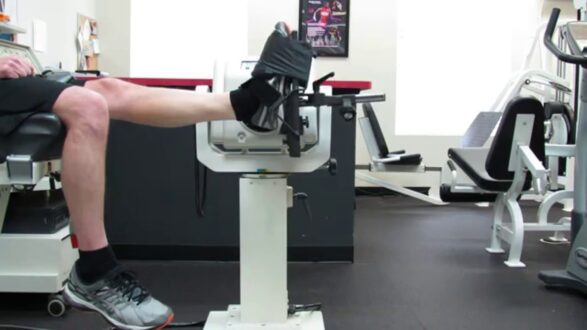What is Isokinetic Dynamometer?
The isokinetic dynamometers are passive dynamometers. They work by resisting the predetermined rate of applied forces and control the speed of the exercise. They can provide applied force records through a range of motions. The dynamometers are used in various exercises and rehabilitation. They are used in orthopaedics, sports, neurorehabilitation, prevention of injury, wellness, geriatric health, cardiopulmonary and medical fitness.
Isokinetic Dynamometer advantages
The ability of the muscle to generate force is compromised with isokinetic loading, that is, with fixed speed variable resistance is used. The fixed speed is pre-selected, and the applied force or the torque is matched with variable resistance throughout the range of motion. There are various advantages of an isokinetic dynamometer. The conditions of exercise can be reproduced by controlling the fixed speed, resistance, movement speed, and testing. It helps in tension development in terms of force, time rate, and quickness.
The changes can be made to accommodate muscle fatigue, pain, and musculoskeletal conditions. The exercise can be made more efficient by increasing capability throughout the entire range of motion. The patient always feels a certain amount of resistance because resistance is equal to the applied force. It allows the neurophysiological training of the muscles. It has more functional speeds with the ability to reproduce faster. It is safe and produces less muscle soreness. It is valid and reliable. It has an objective, permanent record. They are efficient, resistance accommodating, allowing physiological overflow between various speeds that are low and high speed and velocity spectrum training can be performed.
Isokinetic Dynamometer disadvantages
The disadvantages include the lack of personal training and information for optimal use. The cost of the system is too high to purchase and limits it to the clinician. It gets time-consuming when working on more than one joint.
Isokinetic Dynamometer Test
The isokinetic testing has various advantages. It helps to isolate a single group of muscles for the assessment. This can be done by selecting specific types of contractions, which helps in the assessment of the concentric and eccentric muscle components. Another aspect that can be controlled is the range of motion. It helps to perform exercises and tests in a pain-free range of motion. The pain issues and Len tension curve variations can be accommodated by the variable resistance. The primary aim of isokinetic testing is to provide a way to achieve objective measures in an effective and efficient way. The isokinetic assessment helps to attain muscle performance values.
The muscle groups are tested through values like work, peak torque, and power. Work is a functional muscle performance value. The work is the torque that is obtained in the active cases over distance. Peak torque is the maximum muscular force output. Power is their determination of how effectively muscles can perform over time. The reliable and valid objective measure of the performance of muscle can be obtained through isokinetic testing from time to time. The patient needs to perform a cardiovascular warm-up before the test because the warmed-up muscle can function more efficiently and safely than a muscle that is not warmed up.
In comparison, the patient is warming up, set up the dynamometer and computer information. Then instruct the patient to sit in the dynamometer chair, make sure the patient is seated upright. Then stabilize the patient with the straps of the chest, hip, and thigh. Then instruct the patient to grip chair handles. For different muscles, different tests are run. Run the specific test for the particular patient. Give a rest period to the patient and then repeat the procedure for the completion of other test speeds.
Isokinetic Dynamometer Price
The price of the isokinetic dynamometer depends upon the type of the dynamometer being accused. There are two types of dynamometers that are passive and active dynamometers. The passive dynamometer is a manual dynamometer whose primary function is energy dissipation. The torque is produced by the individual by driving the dynamometer. Examples of passive dynamometer are old Cybex systems.
The active dynamometer is also known as robotics. The energy dissipation can be done either by the individual itself, or the dynamometer provides energy itself to work on the patient. Examples of the active or robotic dynamometer include kin com, Cybex, and Biodex dynamometers full storm. The price of the dynamometer varies depending upon whether a manual or automated dynamometer is being purchased. The price may range between hundreds and thousands of dollars and increases with the advancement of the dynamometer being purchased.
 Health & Care Information
Health & Care Information 


